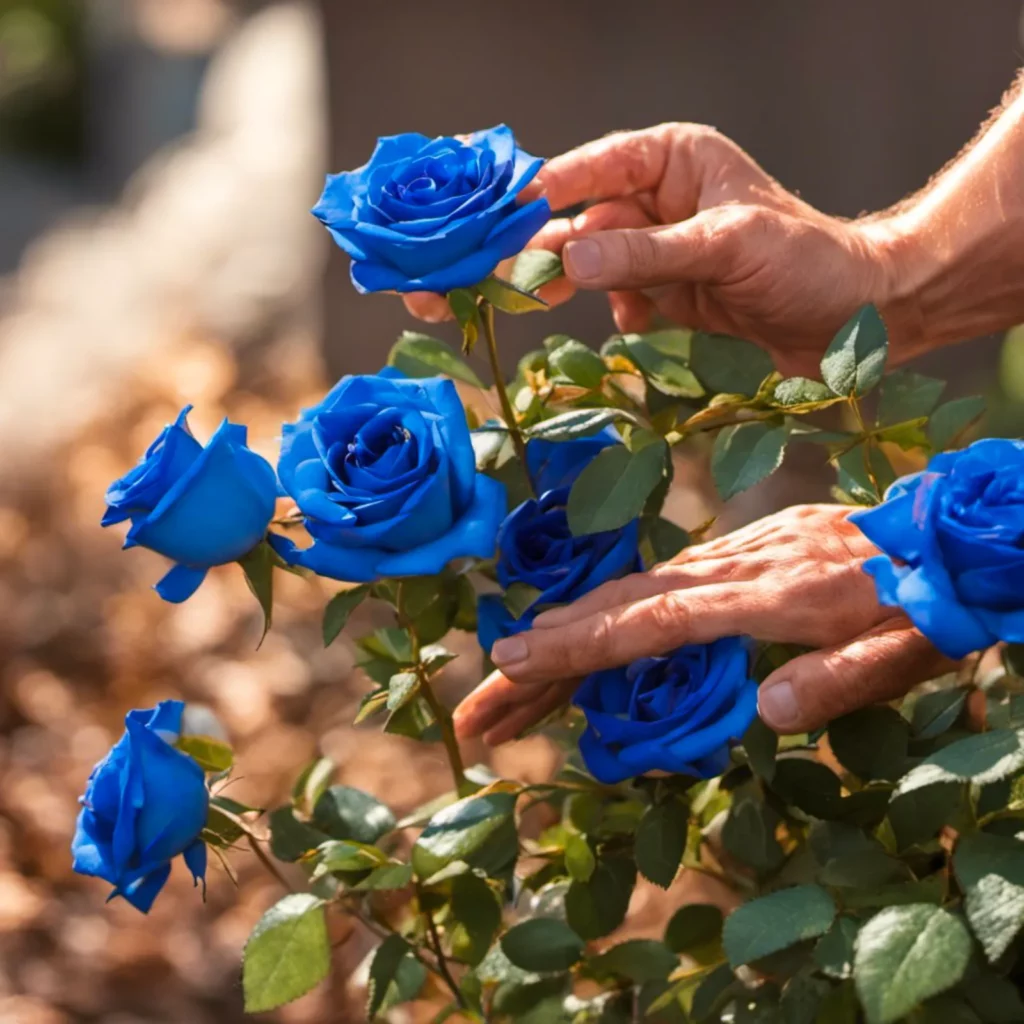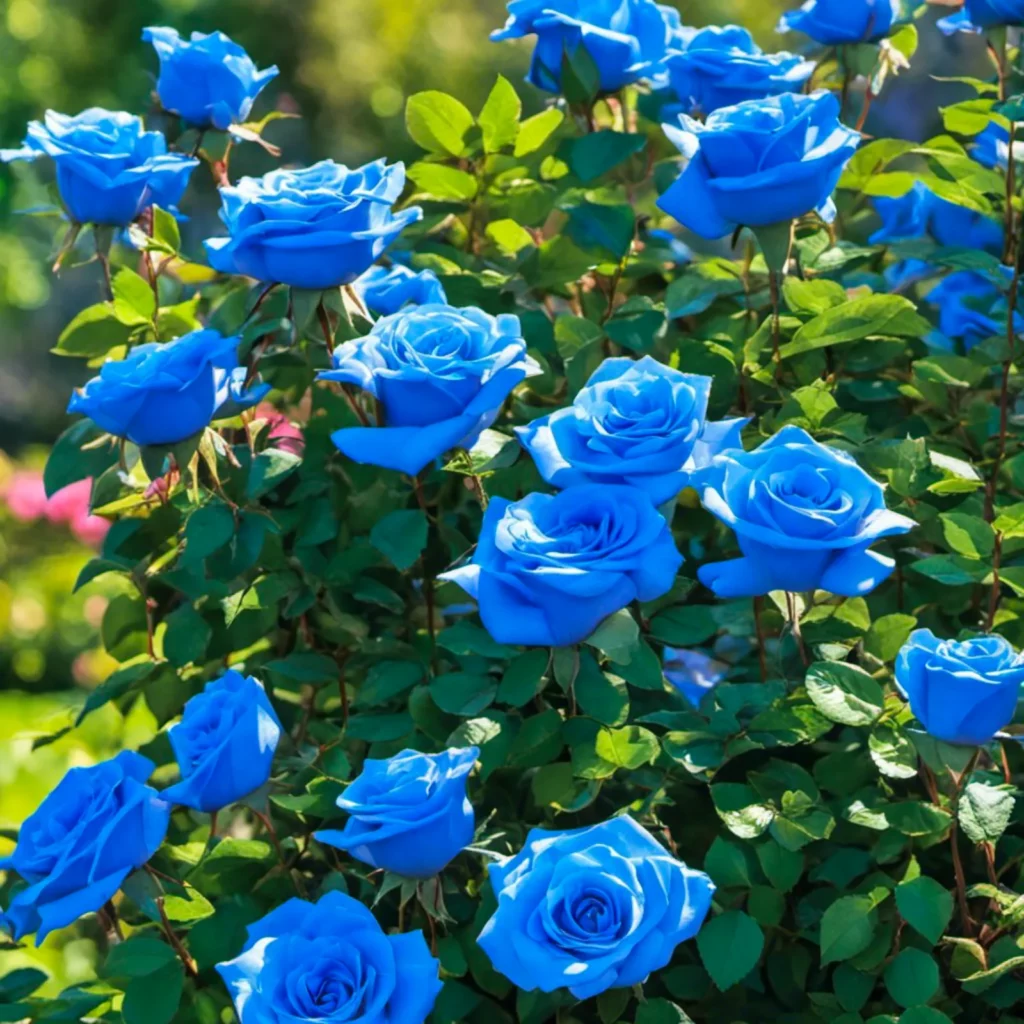Blue Knockout Roses: A Guide to Growing and Caring for Them
Looking to add a pop of color to your garden? Consider the Blue Knockout Rose. These stunning roses feature a unique shade of blue that’s sure to grab your attention. Beyond their visual appeal, they’re easy to care for, making them a great garden addition.
Blue Knockout Roses, a recent addition to the Knockout Rose family, have quickly gained popularity due to their uncommon blue color and large blooms. Despite their beauty, they’re hardy and low-maintenance, suitable for both novice and experienced gardeners.
To incorporate Blue Knockout Roses into your garden, remember they require full sun and well-draining soil. Regular watering, especially in hot, dry weather, and spring pruning for new growth are the primary care tasks. With care, your Blue Knockout Roses will thrive and provide beautiful blooms year after year.
Key Takeaways
- Blue Knockout Roses are a beautiful and unique addition to any garden.
- They are hardy and easy to care for, making them a great choice for novice and experienced gardeners alike.
- With proper care, your Blue Knockout Roses will provide beautiful blooms year after year.

Blue Knockout Roses
If you’re looking for a rose to add some color to your garden, then you should consider Blue Knockout Roses.
These roses are a beautiful shade of blue that will make your garden stand out. In this section, we’ll look at the history and characteristics of Blue Knockout Roses.
History of Blue Knockout Roses
Blue Knockout Roses were first introduced in 2009 by Conard-Pyle Co. They were developed by crossing a blue-flowered rose with a Knockout Rose.
The result was a rose that had the same disease resistance and hardiness as the Knockout Rose, but with beautiful blue flowers.
Characteristics of Blue Knockout Roses
Blue Knockout Roses are a great addition to any garden. Here are some of their characteristics:
- Color: The flowers of Blue Knockout Roses are a beautiful shade of blue. They are not a true blue, but more of a lavender-blue color.
- Blooming: These roses bloom from spring until fall, providing a long-lasting display of color.
- Size: Blue Knockout Roses grow to be about 3-4 feet tall and wide, making them perfect for small gardens or as a border plant.
- Disease resistance: Like all Knockout Roses, Blue Knockout Roses are highly disease resistant. They can withstand common rose diseases such as black spot and powdery mildew.
- Maintenance: These roses are low maintenance and easy to care for. They require minimal pruning and watering.
Caring for Blue Knockout Roses

If you’re looking for a low maintenance yet beautiful addition to your garden, Blue Knockout Roses are the perfect choice. These roses are known for their stunning blue color, which is rare in the world of roses.
They are easy to grow and care for, making them a popular choice for novice and experienced gardeners alike. Here are some tips on how to care for your Blue Knockout Roses:
Planting Blue Knockout Roses
- Choose a location that receives at least six hours of direct sunlight per day.
- Make sure the soil is well-draining and has a pH level between 6.0 and 7.0.
- Dig a hole twice the size of the root ball and add compost to the soil.
- Water the plant thoroughly after planting and keep the soil moist until the plant establishes itself.
Watering Blue Knockout Roses
- Water your Blue Knockout Roses deeply once a week, unless it rains.
- Avoid getting the leaves wet when watering, as this can lead to disease.
- Mulch around the base of the plant to help retain moisture in the soil.
Fertilizing Blue Knockout Roses
- Fertilize your Blue Knockout Roses in the spring after the last frost.
- Use a slow-release fertilizer specifically formulated for roses.
- Follow the instructions on the fertilizer package for application rates.
Pruning Blue Knockout Roses
- Prune your Blue Knockout Roses in the early spring before new growth appears.
- Remove any dead or damaged wood.
- Cut back the remaining canes by one-third to one-half of their length.
Protecting Blue Knockout Roses from Pests and Diseases
- Keep an eye out for common rose pests such as aphids and spider mites.
- Treat any infestations promptly with insecticidal soap or neem oil.
- Prevent diseases such as black spot and powdery mildew by providing good air circulation and avoiding overhead watering.
By following these simple tips, you can enjoy the beauty of your Blue Knockout Roses for years to come. Happy gardening!
How to Propagate Blue Knockout Roses?

Are you a fan of blue knockout roses and want to propagate them in your garden? Luckily, propagating blue knockout roses is a simple and straightforward process that can be done through either cuttings or layering.
Propagating Blue Knockout Roses through Cuttings
One of the easiest ways to propagate blue knockout roses is through stem cuttings. Here’s how to do it:
- Choose a healthy and disease-free blue knockout rose plant.
- Take a cutting from a stem that is at least 6 inches long and has at least 2-3 leaf nodes.
- Remove all the leaves from the bottom half of the cutting.
- Dip the cut end of the stem in rooting hormone powder.
- Plant the cutting in a pot filled with a well-draining soil mix.
- Water the cutting thoroughly and keep it in a warm, bright location.
- In 4-6 weeks, the cutting should develop roots and can be transplanted into the ground.
Propagating Blue Knockout Roses through Layering
Layering is another method of propagating blue knockout roses that involves burying a stem from the parent plant to encourage it to develop roots. Here’s how to do it:
- Choose a healthy and disease-free blue knockout rose plant.
- Identify a low-growing stem that is long enough to reach the ground.
- Make a small cut on the underside of the stem, about 6 inches away from the tip.
- Bury the cut portion of the stem in a shallow hole in the ground, leaving the tip exposed.
- Cover the buried portion of the stem with soil and water thoroughly.
- In 4-6 weeks, the buried stem should develop roots and can be cut from the parent plant and transplanted into the ground.
Propagation is a great way to increase your blue knockout rose collection and add more color to your garden. Whether you choose to propagate through cuttings or layering, be sure to choose healthy and disease-free plants and follow the steps carefully for the best results.
Frequently Asked Questions
What colors are available for Knock Out roses?
Knock Out roses come in a variety of colors, including pink, red, yellow, and white. The Blue Knock Out rose is a relatively new addition to the family and is a beautiful shade of lavender-blue.
What is the best time to plant Knock Out roses?
The best time to plant Knock Out roses is in the spring or fall when the temperatures are mild. This will give your roses a chance to establish their roots before the heat of summer or the cold of winter sets in.
What is the difference between Knock Out and Double Knock Out roses?
The main difference between Knock Out and Double Knock Out roses is that Double Knock Out roses have twice as many petals as the original Knock Out roses. This gives them a fuller, more traditional rose look.
Where can I buy Knock Out roses?
You can buy Knock Out roses at most garden centers and nurseries. They are also available online from a variety of retailers. When purchasing online, be sure to check the seller’s reputation and reviews before making a purchase.
What are some companion plants for Knock Out roses?
Some great companion plants for Knock Out roses include lavender, salvia, catmint, and Russian sage. These plants not only look great with Knock Out roses, but they also attract beneficial insects and pollinators to your garden.
How do I care for Knock Out roses?
Caring for Knock Out roses is relatively easy. They prefer full sun and well-draining soil. Water them deeply once a week, and fertilize them in the spring and mid-summer with a balanced fertilizer. Prune them back in the early spring to promote new growth and remove any dead or diseased wood.






